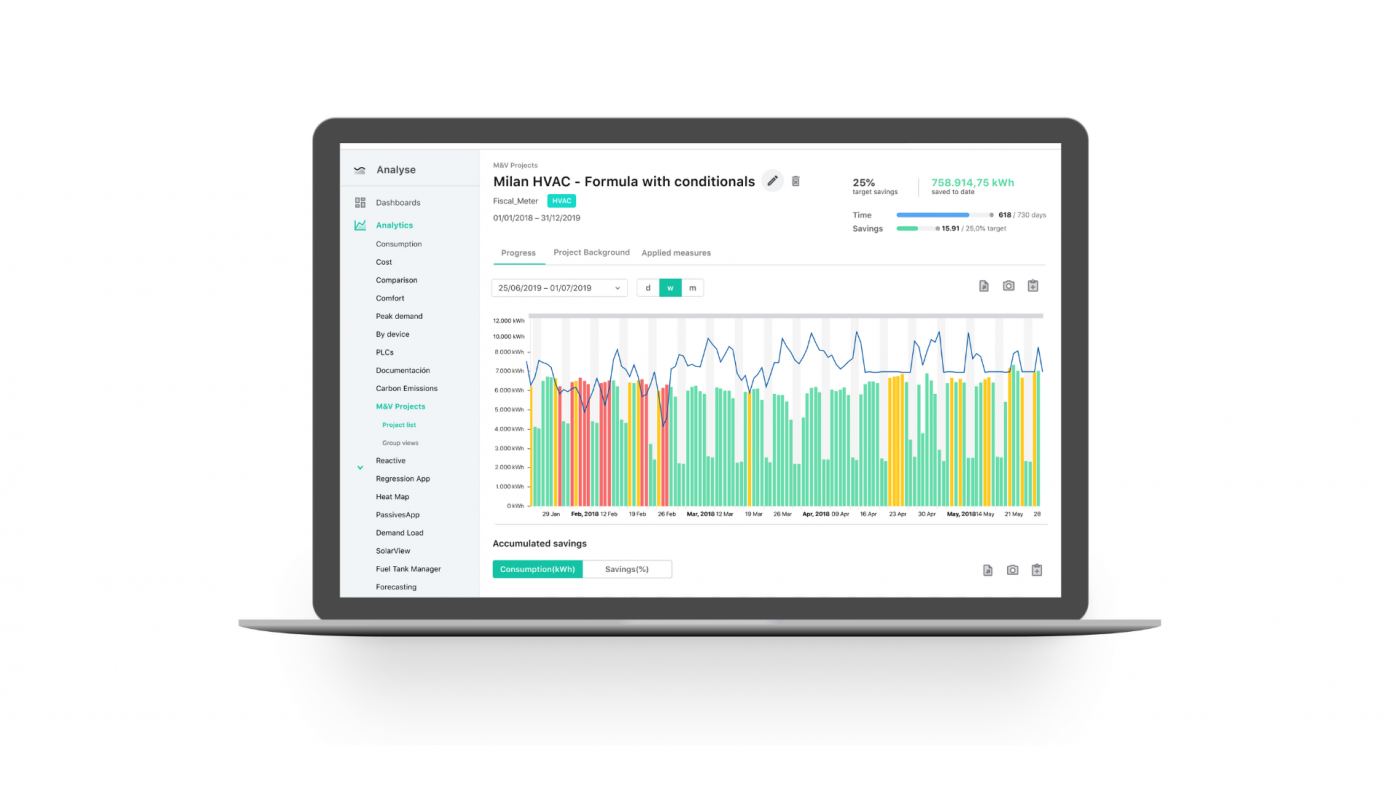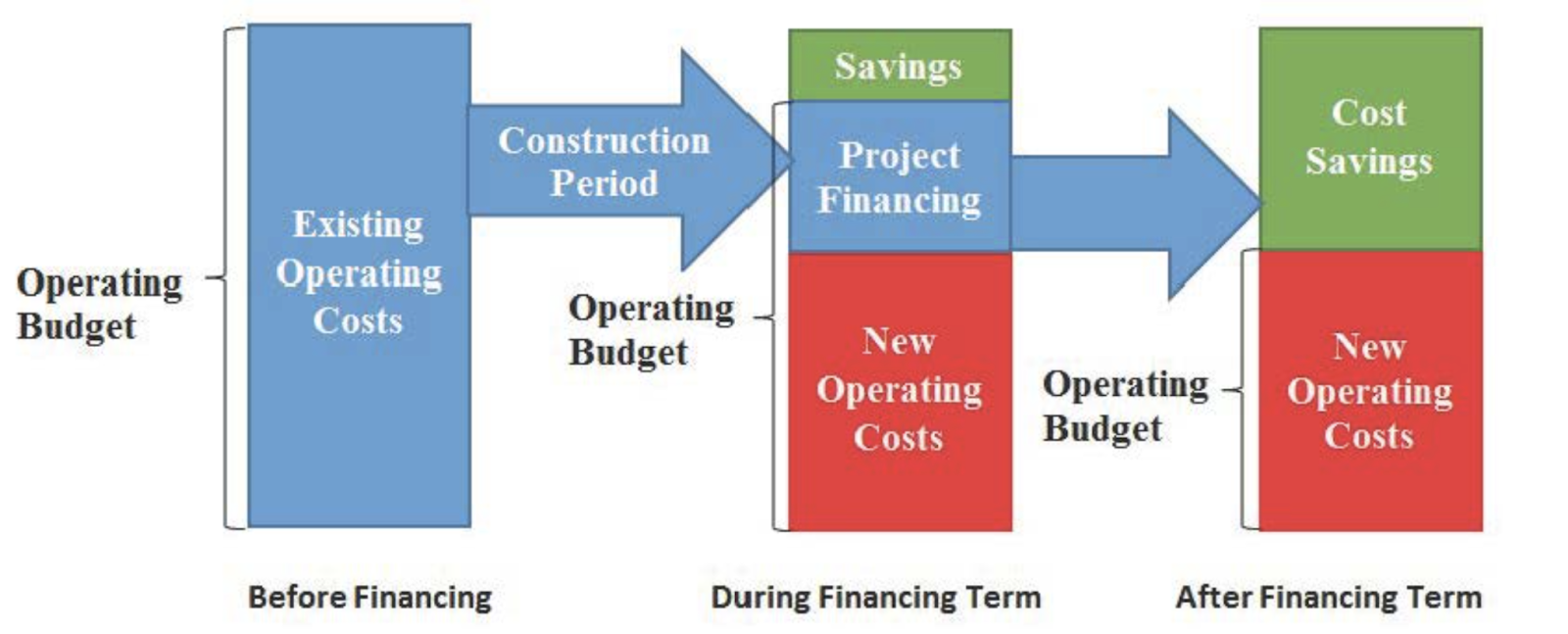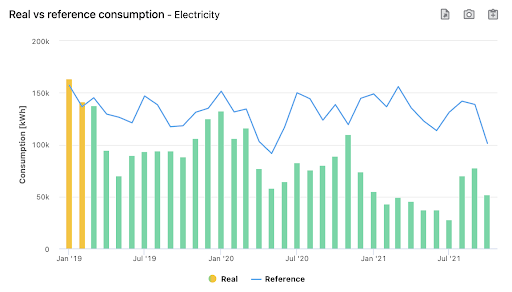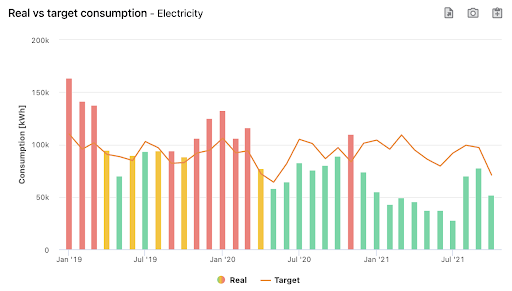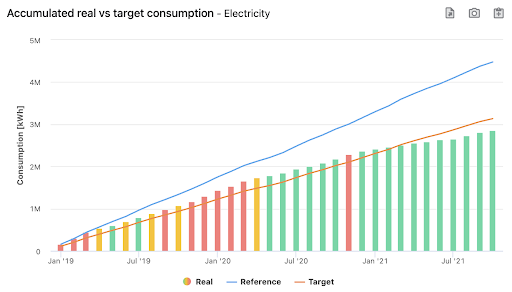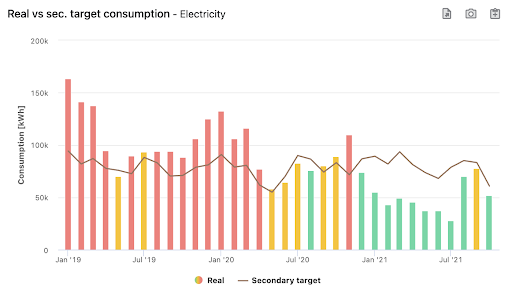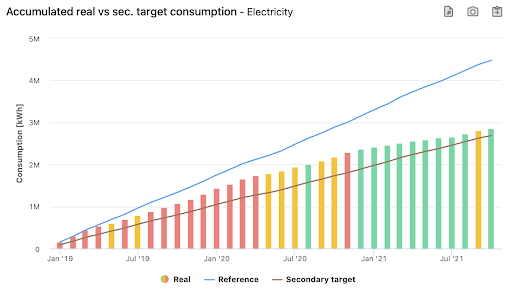Calculating savings in a consumption reduction project can be a very complex task since savings represent the difference between the current situation and an estimated future reality (hypothetical). In this case, performing Savings Measurement and Verification tasks during the project is the answer to ensure the estimated objectives are reached
Below you will discover how, thanks to the savings measurement and verification protocol, you can improve the results of your Energy Performance Contract (EPC):
Savings measurement and verification became a complex and necessary discipline to standardise the way you calculate your savings and to provide a framework on which to build for the implementation of consumption savings projects.
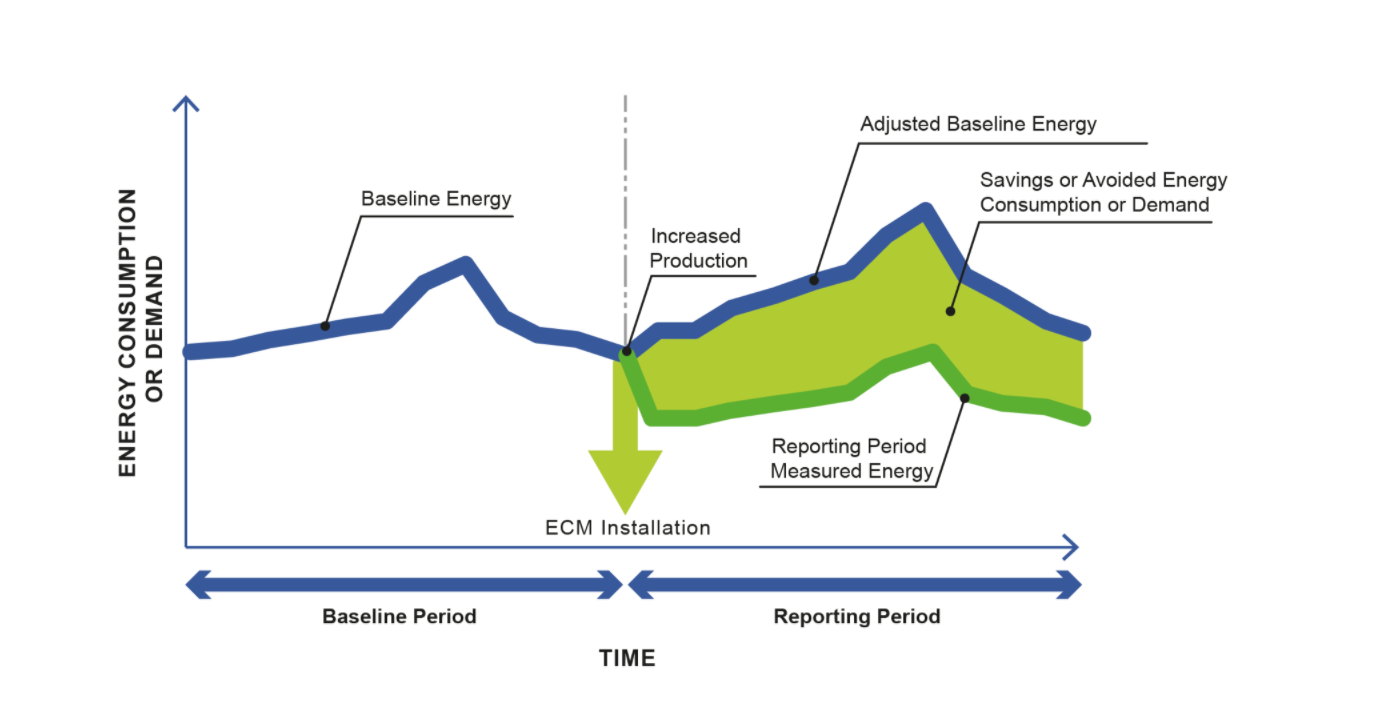
For the implementation of energy savings projects, Energy Performance Contracts (EPC) need to define the basis for the calculation and distribution of the savings obtained for both the energy services company and the customer. In other words, what profitability will be obtained from the energy services contract, by each party.
The financing of energy efficiency projects always comes from the savings generated by these measures. The cost of energy prior to the project is reduced in such a way that part of the savings finance the measures carried out and another part is perceived as an economic benefit of the project itself.
Depending on whether the energy efficiency measures are financed by the ESCO or the customer, it will be shared savings or a guaranteed savings project. In any case, in order to maximise the benefit of an EPC, it is essential to have tools that give you a clear view of the current status of your projects. That will also allow you to react in time to any deviation in savings.
How to Maximise Savings in your Energy Efficiency Project
To evaluate the outcome of your project, you need to have a clear measurement of the project’s objective. And in the case of a savings project, you will need a real-time monitoring tool to track the savings generated.
Dexma Analyse’s M&V functionality will allow you to track the evolution of your project in real-time, giving you an accurate view of its status at all times, and allowing you to react to any deviation from expectations.
The M&V tool not only allows you to evaluate the status of your project in order to move forward in time. Indeed, it also offers you the possibility to reformulate your contract to your liking in order to have other approaches, which do not necessarily have to be those of the project.
Below you will find 3 actions that are essential to maximising the savings of your energy services contract, and that you can carry out in DEXMA’s M&V functionality:
1. Increase the Evaluation Frequency of your Project
Most EPCs are formulated on the basis of an expected monthly baseline consumption, as they often take the energy bills as historical data for such a period.
But the fact that your contract has a monthly occurrence does not mean that the monitoring and calculation of savings should be left to the end of the month. It is better if you take advantage of DEXMA M&V‘s real-time functionalities to monitor the evolution of your savings in more detail.
It is not the same to evaluate at the end of the month if we have achieved the 20% savings target, as it is to evaluate every day if we are meeting that savings percentage.
We can even evaluate the project on an hourly basis, to detect at what times of the day the savings are maximum or minimum and try to replicate the ideal circumstances for as long as possible.
2. Visualising Savings vs. Targets
As already mentioned, in an energy-saving project it is not enough to just save energy…you should go beyond saving a certain target.
In the following graph, you will see an energy-saving project in which a priori we can see that the real consumption (in bars) is lower than the reference consumption (in blue line). This might look good (no savings would be worse), but it does not guarantee that the savings will be sufficient.
In fact, when comparing real and target consumptions on the graph below, we can see that the savings target hasn’t been achieved for various months, so it is no longer so obvious that the project is a success.
The reality of this project is that 32.47% of energy is being saved compared to the baseline. But given that the savings target was 30%, we are only 2.47% above that. So with several months to go before the end of the contract, we have no reason to feel confident that there will be savings to be distributed, and even if there were, they would be very small savings.
If we add the fact that the Energy Service Company (ESCO) has a higher savings target, so that the distribution of savings guarantees the profitability of the project (let’s say 40%), we notice that the project is no longer profitable for the company.
In fact, we can observe how the total consumption is higher than the ESCO´s target, and in business terms, it means that despite the high energy savings achieved, the project will end up in a loss.
That’s why it’s important to keep the project objectives in mind, whether to report on the contract or to evaluate the internal profitability of the energy services company.
3. Evaluating multi-location contracts
In the case of multi-location contracts, Dexma M&V will help you to report the savings of all the projects in your contract in an aggregated way. The objective is for you to have a global view of the total contract, without getting lost in the details of each of the locations.
If, for example, we have locations with much higher consumption than others, a small percentage saving achieved in these can be of greater importance than a large saving in a smaller location. Therefore, it is important to have a grouped view of the projects that allow us to understand the overall situation.
And in turn, to be able to find those projects that are profitable to the project and those that need to be improved in order to achieve the objectives.
These actions to measure and verify savings during your energy efficiency project are advanced actions that will help you to accelerate decision-making and readjustment during the project. This will ensure that your Energy Service Company will cover the costs and achieve the profitability targets of your EPC.
Contact our energy management software experts now, and test the M&V functionality of the Dexma Platform.
Editor’s note – This article has been written by 2 of DEXMA’s leading experts in energy management software:
Alfonso Mateos, Product Owner at Dexma, has been part of the team since 2015. He started his career at Dexma within the Operations Department, supporting both hardware and software customers thanks to his excellent background as energy projects manager. He currently works in the Product Department as Product Owner of the most analytical part of the Dexma Energy Intelligence Platform, Dexma Analyse.
